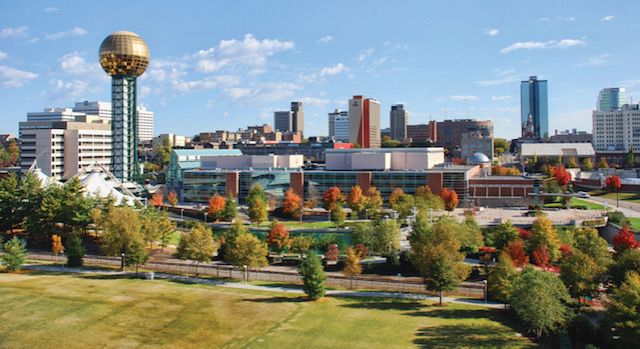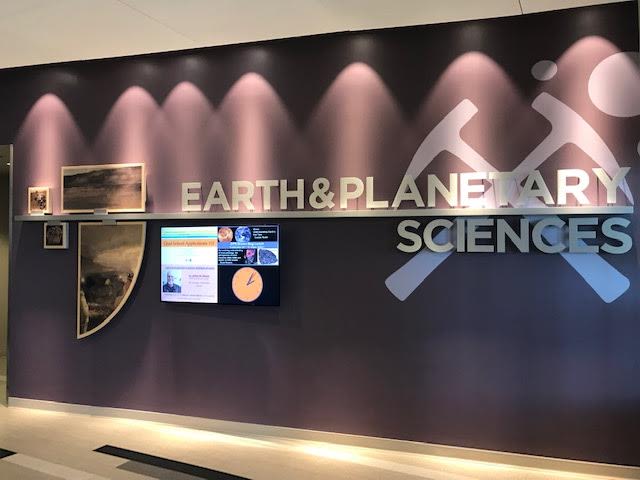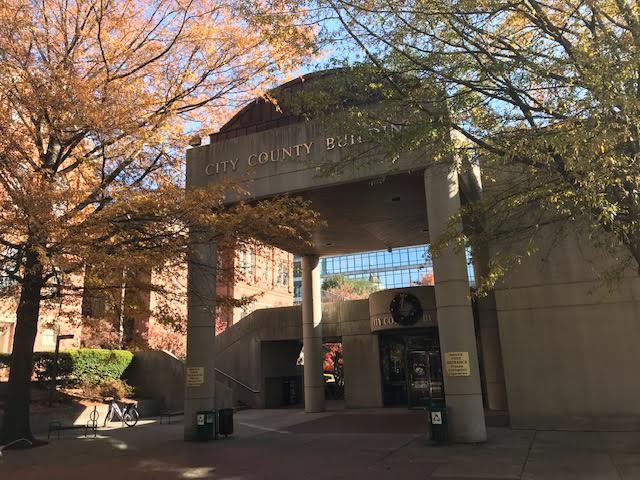Knoxville's Commitment to Sustainability
How Knoxville's Citizens Can Help Improve Their City

While Knoxville is now lit up by 29,500 energy efficient LED lights across the city, questions remain about how the city can meet its emissions reduction goals going forward.
The new street lights help reduce light pollution in the city without creating disposable hazards like the previous high-pressure sodium streetlights. The new LED lights will also be more reliable than the previous lights which would mean that the city is not as susceptible to outages. The LED streetlight retrofit has saved the city $3.8 million on their KUB bill since April 2018, according to Erin Gill, sustainability director.
City of Knoxville's KUB bill graph. Graph Courtesy of knoxvilletn.gov
City of Knoxville's KUB bill graph. Graph Courtesy of knoxvilletn.gov
The lights are just one pillar of Knoxville’s sustainability plan, which aims to reduce greenhouse gas emissions by 50 percent by the year 2030 and 80 percent by the year 2050. Currently, Knoxville is on track to reduce greenhouse gas emissions by 20 percent before 2020, saving more than $3 million annually on utility and maintenance bills, according to Gill.
City of Knoxville Emissions Reduction Goals. Picture Courtesy of knoxvilletn.gov
City of Knoxville Emissions Reduction Goals. Picture Courtesy of knoxvilletn.gov
The plan emphasizes community engagement and infrastructure as well. While some initiatives (like streetlights) are tangible, community buy-in is less certain.
“I think [the city’s goals are] attainable but it’s going to be really hard,” said Mike McKinney, director of the environmental studies program at the University of Tennessee. “LED lights are a good start, but an incremental one.

The Earth & Planetary Sciences Department and the Location of Mike McKinney's office. Photo Courtesy of Jeffrey Russell
The Earth & Planetary Sciences Department and the Location of Mike McKinney's office. Photo Courtesy of Jeffrey Russell
The real challenge, McKinney said, requires a lifestyle change. “A commitment would mean getting people away from big SUVs,” he said in an interview. “People changing their driving habits and a commitment to mass transit, which is obviously a lot of work.”
Ryan Wilusz wrote an article about his experiences with Knoxville public transit for the Knoxville News Sentinel in May of 2019. In his article he discusses his choice to take the public bus system for a week and not use his car. The article comes to his conclusion that he would still use his car because of a plethora of issues. Some of the issues included missed bus routes, battling the weather, and being reliant upon someone else to you to where you're going on time. For public transit to work in Knoxville it's clear upgrades will need to be made.
The city’s Smarter Cities Partnership is educating and helping people become energy efficient and better educated about energy efficiency. The partnership has put $20 million toward the education of community members.

The City County Building Where the Sustainability Office is Located. Photo Courtesy of Jeffrey Russell
The City County Building Where the Sustainability Office is Located. Photo Courtesy of Jeffrey Russell
“The Smarter Cities Partnership brought together more than 20 community organizations to discuss affordability of inner city homes through energy efficiency,” said project manager Brian Blackmon. “The discussions and partnerships formed led to several initiatives like the education-focused Savings in the House and weatherization funded programs such as the Knoxville Extreme Energy Makeover and KUB Round It Up. It aligned partners in mission and resources to better serve those in need. More than 2,000 homes have been weatherized through those programs, and more than 2000 residents have been through education workshops about receiving weatherization services or not.”
The Better Buildings Initiative was created by the Department of Energy. The City of Knoxville has committed to reducing energy use and being more energy efficient in its municipal buildings – adding solar panels to the Knoxville Convention Center, for example. Some barriers to success include “not having an organizational plan while also lacking funding,” according to the Department of Energy’s website.
Should the plan succeed in part, “We would see a huge improvement in our air quality even if it was just a reduction by 50 percent,” McKinney said.
Businesses could make an even larger impact than individuals – but it’s individuals who may have to be the driving force.
“A lot of businesses don’t want to do it for profit reasons and ideological reasons,” McKinney said, “but I think it’s gonna take a wholesale push to get enlightenment to big businesses. I think the key is to get people to realize that sustainability is profitable, and it’s marketing which makes your business look good.”
I was able to get a response from Erin Gill on the comments made by Mr. McKinney specifically on the focus of changing habits. In response Gill said, "Getting to 80% by 2050 will take both systems-level changes as well as shifts by consumers.
For example, decarbonization of the electricity sector will be important, and that is a change largely driven by our utility companies. However, it is also important that we use energy efficiently, and there is a role to play by citizens in making their homes and actions more energy efficient.
Similarly, federal regulations and car manufacturers have historically played a huge role in reducing emissions from the cars we drive, and that will continue to be important. But consumers make choices each day about their mobility: where to drive, what to drive, and whether they might instead choose to walk, bike, take transit, or carpool."
While sustainability will need to be embraced by citizens for the city's goals to be met. The city still has room for growth and improvement to better their sustainability plans.




